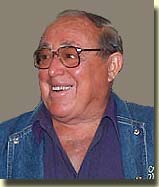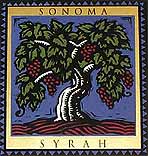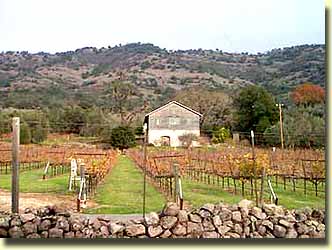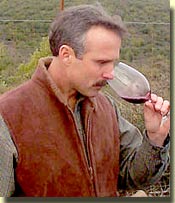
|
|
|
Syrah – from the ground up The telephone rang early, jangling my pre-caffeine nerves. I managed to get the handset to my ear.
"Yehuh." Of course, he was right.
The wines have always gone where the fruit
takes them. Aldo, of course, has grown Zinfandel in the Napa Valley for
decades, and we are fortunate that his son, Robert, chose to start up his
own label. After years of experience at Beringer, and with the help of
winemaker Al Perry (Voss, Ehler’s Grove), and So, it was with interest that I read a recent posting on the Internet inquiring about the "new Syrah program" that Biale was launching. Were these folks "true Syrah believers?" the poster wondered, or was this just another winery looking to cash in on what seems to be California’s current fashionable varietal? As I would learn while talking to Bob, and
to Al Perry a few days later, their Syrah program would begin in the same
way the Zinfandel program did - from the ground up. And, Biale was not
interested in creating just one Syrah that would fit one paradigm of the
variety - they believe that Syrah can have many personalities, and be
expressed in more than just one way. |
|
|
Left Coast
Correspondent PROFILES: Tasting
Notes from Synergism Up
the Coast More Tasting Notes from the Ridge Galleron Tasting
a Legacy - C O
P I A "T"
is for... Premiere Napa Valley ® |
|
|
Soda Canyon Road breaks off of the Silverado Trail just south of the Stag’s Leap District, and winds north for miles up into the hills above Oakville. It is narrow and sparsely traveled, bordered by a mix of newer, gated upscale homes and historic vineyards with rustic houses and outbuildings. Just when you think it can’t be much further, the road narrows, and a turn into a nondescript driveway leads to a maze of forks and driveways. Eventually, the scrub oak and underbrush gives way to rows of vines, and minutes later you are surrounded by acres of carefully tended grapevines. Acres. And acres. 500 or so, I understand – the vast majority planted to Cabernet Sauvignon. At the highest point of the vineyard, on a knoll overlooking the rest of the property lies a small block of young vines grafted to a Beaucastel clone of Syrah. Next spring will be third leaf, and a small amount of fruit will be available for experimentation. There is also a 5 acre block of Zinfandel on another part of the site, planted to Aldo’s clone and Old Crane clone. Hopefully, in time this will develop into another vineyard designate for the Zinfandel program.
This site is only one of seven that are currently being developed for Biale. They have sought out growers with compatible philosophies – do whatever it takes in the vineyard to create the finest wine. Long term leases will assure a stable supply of fruit - involvement in the vineyard will assure quality – and, a handshake still means something, and is sometimes all that is needed to finalize an agreement. These will be limited production wines, most likely no more than a hundred or so cases. The vineyard sites range from Napa to Alexander Valley to Sonoma Valley and even Paso Robles. Each site has the potential to produce unique wines that will offer a variety of Syrah experiences.
1999 Biale Syrah Rockaway Vineyard – first Syrah from Biale, sourced from a vineyard on the east side of the Alexander Valley – dense purple color – waves of ripe Syrah fruit and spicy aromatics from the glass, despite being tasted outside with a steady breeze – rich and full in the mouth with flavor to spare – balanced and sophisticated with immediate appeal, but structured for aging. This is a very delicious wine, clearly Syrah and clearly California. 2000 Syrah Rockaway Vineyard - barrel sample - this will be the first wine to bear name and label of the new Syrah program (name and graphics to be determined). Lavender tinged purple robe of youth – restrained aromatics – mostly primary fruit flavors in this very young wine – smooth and friendly in the mouth. I suspect this wine will reflect the vintage, and become an elegant sibling to the 99. Both of these wines reflect the house style of this producer – rich upfront fruit, character and personality, amazing drinkability. Maybe I spent too much time with Sean Thackrey, but I find discussions of "varietal correctness" and typicity kinda boring. I don’t know what a "true Syrah believer" is, but I know quality wine when I taste it. And, I have been around these folks long enough to tell you that they are committed to producing nothing less. Perhaps the most exciting part of the Biale success story is just about to be written. Stay tuned. Robert Biale Vineyards © Allan Bree February 2002 |
|
 I first met
Robert and Aldo
(left)
Biale at the
1993 ZAP Festival, where they unveiled their first vintage of Zinfandel.
That wine, the 1991 Aldo’s Vineyard, remains a sentimental favorite of
mine, and I remember being as impressed with the people as I was with the
wine. Since that time, the family has become friends - guests in my home,
and I in theirs. I follow the wines as closely as I can, tasting from
barrel at the open house and treating myself to an occasional bottle from
my cellar.
I first met
Robert and Aldo
(left)
Biale at the
1993 ZAP Festival, where they unveiled their first vintage of Zinfandel.
That wine, the 1991 Aldo’s Vineyard, remains a sentimental favorite of
mine, and I remember being as impressed with the people as I was with the
wine. Since that time, the family has become friends - guests in my home,
and I in theirs. I follow the wines as closely as I can, tasting from
barrel at the open house and treating myself to an occasional bottle from
my cellar. marketeer
Dave Pramuk (right)
(Lokoya,
Cardinale), he founded Robert Biale Vineyards. They began with the release
of the 1991 Aldo’s Vineyard Zinfandel. Occasionally, vineyard sources
will provide them with opportunity. Small amounts of Barbera and Refosco
have been made. Limited bottlings of Petite Sirah and Sangiovese (honoring
Bob’s grandmother) are offered, all produced from old vine sources.
Indeed, it has been finding fruit sources of sufficient quality and
character that has limited their production. One taste of the eponymous
Zinfandel will put a smile on your face. This is Zinfandel the way I love
it – fresh, forward, bright and juicy.
marketeer
Dave Pramuk (right)
(Lokoya,
Cardinale), he founded Robert Biale Vineyards. They began with the release
of the 1991 Aldo’s Vineyard Zinfandel. Occasionally, vineyard sources
will provide them with opportunity. Small amounts of Barbera and Refosco
have been made. Limited bottlings of Petite Sirah and Sangiovese (honoring
Bob’s grandmother) are offered, all produced from old vine sources.
Indeed, it has been finding fruit sources of sufficient quality and
character that has limited their production. One taste of the eponymous
Zinfandel will put a smile on your face. This is Zinfandel the way I love
it – fresh, forward, bright and juicy.


 Bob
(left), Dave and I lunched from the back of
their pickup truck at the top of the Syrah block, and sipped glasses of
the first Syrah from Biale. It was wonderful to hear the excitement in
their voices and see the sparkle in Bob’s eyes as they talk about this new
chapter in the Biale story. With a new winery on the horizon, there is a
great deal to be excited about.
Bob
(left), Dave and I lunched from the back of
their pickup truck at the top of the Syrah block, and sipped glasses of
the first Syrah from Biale. It was wonderful to hear the excitement in
their voices and see the sparkle in Bob’s eyes as they talk about this new
chapter in the Biale story. With a new winery on the horizon, there is a
great deal to be excited about.